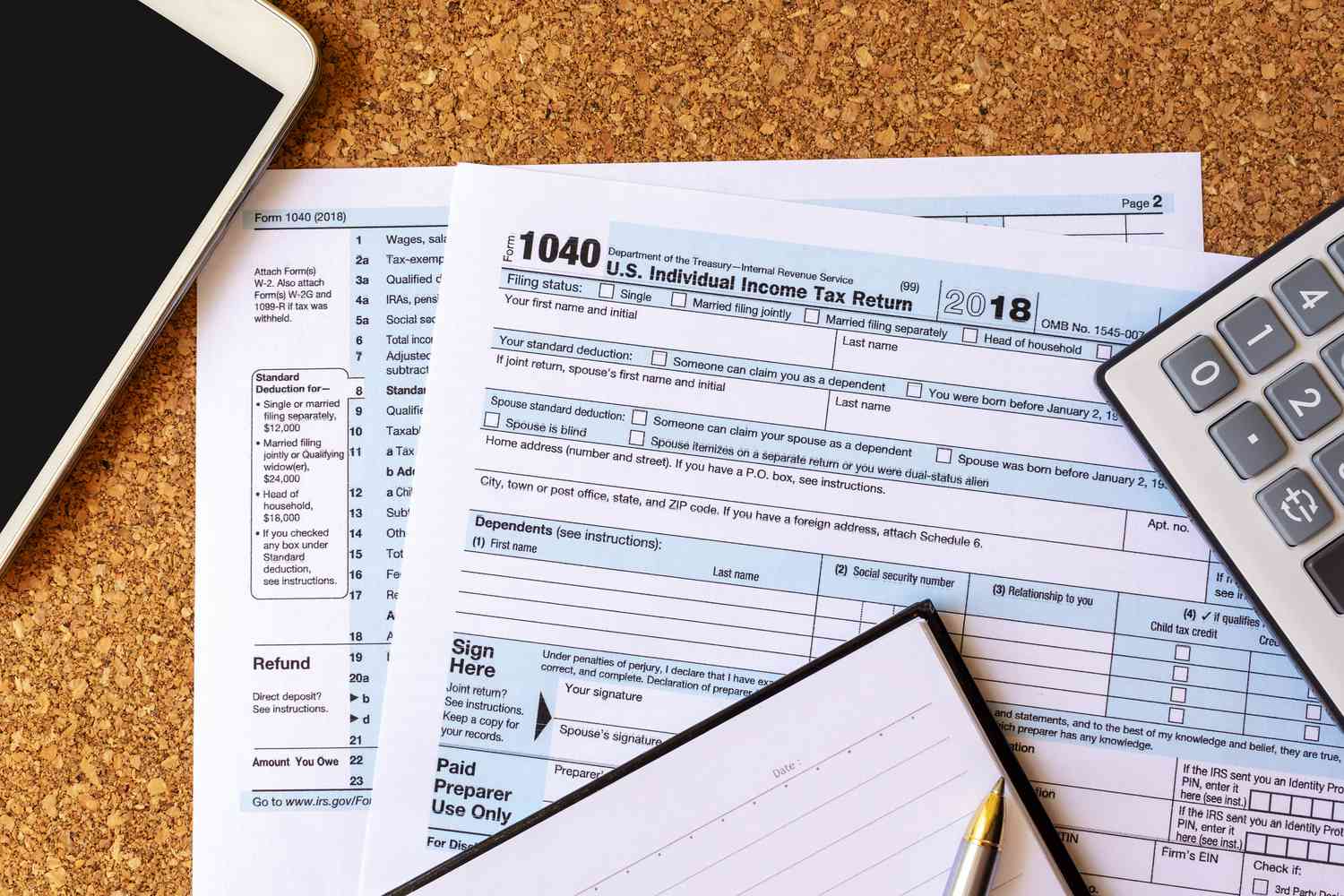Home>Finance>How Many Times Can You Refinance A Student Loan?


Finance
How Many Times Can You Refinance A Student Loan?
Modified: February 21, 2024
Learn how many times you can refinance a student loan and manage your finances effectively. Discover the options available for refinancing your student loans and improve your financial situation.
(Many of the links in this article redirect to a specific reviewed product. Your purchase of these products through affiliate links helps to generate commission for LiveWell, at no extra cost. Learn more)
Table of Contents
Introduction
Student loans can be a significant burden, with high interest rates and lengthy repayment terms. Fortunately, there are options available to help borrowers save money and manage their debt more effectively. One such option is student loan refinancing.
Refinancing a student loan involves taking out a new loan with better terms and using it to pay off the existing loan. This can help borrowers secure a lower interest rate, reduce monthly payments, and even shorten the repayment period. However, before considering refinancing, it’s important to understand the process, the benefits, and the potential drawbacks.
In this article, we will explore the concept of student loan refinancing, discuss the benefits and drawbacks, and address the question that many borrowers have: how many times can you refinance a student loan?
So, if you’re struggling with your student loan repayments or simply want to find ways to save money, keep reading to learn more about the refinancing options available to you.
Understanding Student Loan Refinancing
Before diving into how many times you can refinance a student loan, it’s essential to understand the concept of refinancing itself. Student loan refinancing involves replacing one or more existing loans with a new loan, typically from a different lender. The purpose of refinancing is to secure more favorable terms, such as a lower interest rate, more flexible repayment options, or a shorter loan term.
When you refinance a student loan, the new lender pays off your existing loan(s), and you start making payments to the new lender. This consolidation simplifies your repayment process, as you’ll only have one loan and one monthly payment to manage.
It’s important to note that refinancing is different from loan consolidation. While consolidation combines multiple loans into one, refinancing involves applying for a new loan solely to replace the original loan. Consolidation is typically done through a federal program, whereas refinancing is offered by private lenders.
The primary goal of student loan refinancing is to save money by securing better loan terms. By refinancing at a lower interest rate, borrowers can potentially reduce their monthly payments or pay off their loans faster. Additionally, refinancing may allow borrowers to switch from a variable interest rate to a fixed interest rate, providing stability and predictability in monthly payments.
It’s essential for borrowers to carefully consider the terms and conditions of a refinanced loan. While refinancing can offer benefits, it may not be the best option for everyone. Factors such as credit score, income, and employment stability can impact eligibility and the interest rates offered.
Now that you have a better understanding of student loan refinancing, let’s explore the benefits and drawbacks to help you make an informed decision.
Benefits and Drawbacks of Refinancing
Refinancing your student loans can offer several potential benefits, but it’s important to consider the drawbacks as well. Here are the key advantages and disadvantages to keep in mind:
Benefits:
- Lower Interest Rate: One of the primary reasons borrowers choose to refinance is to secure a lower interest rate. With a lower rate, more of your payment goes toward the principal balance, allowing you to save money over the life of the loan.
- Reduced Monthly Payments: Refinancing may enable you to obtain a longer repayment term, resulting in lower monthly payments. This can provide relief if you’re struggling to meet your current payment obligations.
- Shorter Repayment Period: Conversely, if you have the means to pay off your loans faster, refinancing can allow you to select a shorter loan term. This helps you become debt-free sooner and save on interest charges.
- Consolidation of Loans: Refinancing allows you to merge multiple loans into a single, manageable loan. This simplifies your repayment process and can make it easier to keep track of your debt.
- Improved Loan Servicing: If you have experienced issues with your current loan servicer, refinancing gives you the opportunity to switch to a lender with better customer service and support.
Drawbacks:
- Loss of Federal Loan Benefits: By refinancing federal student loans with a private lender, you may lose certain benefits such as income-driven repayment plans, loan forgiveness options, and deferment or forbearance programs. Before refinancing, carefully consider whether these benefits are essential for your circumstances.
- Need for Good Credit and Stable Income: Private lenders typically require borrowers to have a strong credit profile and stable income to qualify for refinancing. If you have a low credit score or irregular income, you may face difficulties in obtaining favorable refinancing terms.
- Potential for Higher Costs: While refinancing can save you money, it’s important to consider the associated costs, such as origination fees or prepayment penalties. These expenses can impact the overall cost-effectiveness of refinancing.
- Resetting the Clock: If you have been making timely payments on your current loans and refinance them, you essentially start a new loan, which means extending the repayment period. This can result in paying more interest over time.
Considering these benefits and drawbacks is crucial in determining whether refinancing is the right choice for you. However, before making a decision, it’s important to understand how many times you can refinance a student loan, which we will explore in the next section.
How Many Times Can You Refinance a Student Loan?
The number of times you can refinance a student loan depends on several factors, including the policies of the lender and your individual financial situation. Generally, there is no set limit on the number of times you can refinance a student loan. However, multiple refinancing may have certain implications worth considering.
Each time you refinance, you will be applying for a new loan, which means going through the application process and potentially facing additional fees or costs. It’s important to carefully evaluate whether the benefits of refinancing outweigh these expenses.
Additionally, refinancing multiple times may impact your credit score. Each time you apply for a new loan, a hard inquiry is made on your credit report, which can temporarily lower your credit score. However, as you make timely payments on the new loan, your credit score may gradually improve.
Another factor to consider is the interest rate environment. If interest rates drop significantly after you refinance, you may be tempted to refinance again to secure an even lower rate. However, it’s essential to carefully weigh the potential savings against the costs and fees associated with refinancing.
Ultimately, the decision to refinance a student loan should be based on your specific financial goals and circumstances. Before refinancing, it’s recommended to shop around and compare offers from different lenders to ensure you get the best terms and rates available.
Remember, refinancing is not suitable for everyone. If you have federal student loans, make sure to thoroughly research the potential loss of federal loan benefits before deciding to refinance with a private lender.
In summary, while there is no strict limit on the number of times you can refinance a student loan, it’s important to carefully consider the costs, benefits, and potential impact on your credit score before refinancing multiple times.
Now that you have a better understanding of how many times you can refinance a student loan, let’s explore some important factors to consider before deciding to refinance.
Factors to Consider Before Refinancing
Before you decide to refinance your student loan, it’s essential to evaluate various factors to ensure it’s the right choice for your financial situation. Here are some key factors to consider:
1. Interest Rates: Compare the interest rate on your current loan with the rates offered by potential refinancing lenders. If you can secure a significantly lower interest rate, refinancing may be beneficial. However, if the difference is minimal or if interest rates are expected to drop further, it may be wise to wait.
2. Loan Term: Determine whether you want to extend or shorten your repayment period. If you’re struggling to make your monthly payments, extending the loan term through refinancing may provide relief. Conversely, if you have the means to pay off your loans faster, refinancing to a shorter term can help you save on interest payments.
3. Loan Amount and Balance: Consider the principal amount of your loan and the remaining balance. Some lenders may have minimum loan requirements or may not refinance certain loan amounts. Ensure that the refinancing options you’re exploring can cover your specific loan needs.
4. Credit Score: Check your credit score before applying for refinancing. Lenders typically require a good credit score to qualify for favorable rates. If your credit score is below average, it may be beneficial to work on improving it before refinancing.
5. Income and Employment Stability: Lenders also consider your income and employment stability when determining if you qualify for refinancing. Having a steady income and a secure job can improve your chances of getting approved and securing better loan terms.
6. Fees and Costs: Understand the fees and costs associated with refinancing, such as origination fees, application fees, or prepayment penalties. These expenses can impact the overall cost-effectiveness of refinancing.
7. Federal Loan Benefits: If you currently have federal student loans, weigh the benefits you may lose by refinancing with a private lender. Federal loans offer protections like income-driven repayment plans, loan forgiveness options, and deferment or forbearance programs. Consider whether these benefits are valuable for your specific circumstances.
8. Financial Goals: Finally, consider your long-term financial goals. Refinancing can help you save money, manage your debt more effectively, and potentially pay off your loans faster. Evaluate how refinancing fits into your broader financial plans.
Keep in mind that these factors are not exhaustive, and everyone’s financial situation is unique. It’s essential to assess your individual circumstances and consult with financial professionals if needed before moving forward with refinancing.
If refinancing does not seem like the right choice for you, there are alternative options available, which we will discuss in the next section.
Alternatives to Refinancing
While refinancing can be a valuable option for managing your student loans, it may not be the right choice for everyone. Fortunately, there are alternative strategies you can consider to alleviate the burden of your student loan debt. Here are a few alternatives to refinancing:
1. Income-Driven Repayment Plans: For borrowers with federal student loans, income-driven repayment plans can help make payments more manageable based on your income and family size. These plans adjust your monthly payments by capping them at a percentage of your discretionary income, potentially resulting in lower monthly payments.
2. Loan Forgiveness Programs: Some borrowers may be eligible for loan forgiveness programs, such as Public Service Loan Forgiveness (PSLF) or Teacher Loan Forgiveness. These programs forgive a portion of your student loan debt after meeting specific criteria, such as working in a qualifying public service job or teaching in a low-income school.
3. Consolidation: If you have multiple federal loans, consolidation can simplify your repayment by combining them into a single loan. This can make it easier to manage payments, although it won’t reduce your interest rate. It’s important to note that consolidating federal loans with a private lender through refinancing will result in the loss of federal loan benefits.
4. Deferment or Forbearance: If you are facing temporary financial hardship, you may be eligible for deferment or forbearance, which allow you to temporarily pause or reduce your loan payments. These options can provide temporary relief, but interest may continue to accrue during the deferment or forbearance period.
5. Loan Repayment Assistance Programs: Some employers, organizations, and states offer loan repayment assistance programs (LRAPs) to help employees or individuals in specific fields pay off their student loans. These programs typically provide financial assistance in the form of loan payments or loan forgiveness in exchange for working in designated areas or fulfilling certain requirements.
6. Budgeting and Financial Planning: Implementing effective budgeting strategies and financial planning can help you manage your student loan payments. By carefully tracking your income and expenses and making adjustments where possible, you may free up additional funds to allocate towards loan payments.
Consider evaluating these alternatives and determining which options align with your financial goals and circumstances. Remember to thoroughly research and understand the terms and conditions of each alternative before making a decision.
While refinancing may offer potential benefits, exploring these alternative strategies can provide additional avenues for managing your student loan debt effectively.
Now, let’s summarize the main points discussed in this article.
Conclusion
Managing student loan debt can be a challenging task, but with the right knowledge and understanding of available options, you can take control of your financial situation. In this article, we explored the concept of student loan refinancing and discussed the benefits and drawbacks associated with it.
While there is no strict limit on how many times you can refinance a student loan, it’s important to carefully evaluate the costs, benefits, and potential impact on your credit score before refinancing multiple times. Factors such as interest rates, loan terms, credit score, and income stability should all be considered when making a decision.
If refinancing does not seem like the right option for you, there are alternative strategies to explore, such as income-driven repayment plans, loan forgiveness programs, loan consolidation, and loan repayment assistance programs. Each alternative has its own pros and cons, so it’s essential to assess how they align with your financial goals and circumstances.
Remember that everyone’s situation is unique, and what works for one person may not necessarily work for another. It’s crucial to carefully evaluate your options, consult with financial professionals if needed, and make an informed decision based on your individual circumstances.
Ultimately, the goal is to find a solution that helps you effectively manage your student loan debt, save money where possible, and work towards achieving your long-term financial goals. By understanding the options available to you and making informed decisions, you can take steps towards a brighter financial future.
Thank you for reading this comprehensive guide on student loan refinancing and alternatives. We hope it has provided you with valuable insights and information to navigate the world of student loan management. Remember, financial freedom is within reach with careful planning, discipline, and informed decision-making.














